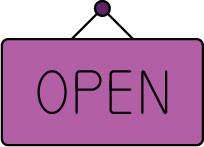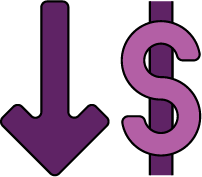Services, access, fees - how do you choose the right bank account for your needs?
The types of bank accounts available
There are many different types of accounts available, including:
- basic chequing and savings accounts
- full-service accounts with many types of transactions included
- low-fee or no-fee accounts
- youth, student and seniors’ accounts
Each account offers a different range of services. How do you know which account is right for you? Choosing the right account depends on the services you need and want.

Opening an account
Anyone can open a bank account provided you have the proper identification. It’s important to understand that you can open a bank account even if:
- you don’t have a job
- you don’t have money to put in the account right away
- you have been bankrupt
- you have no credit history
Identification needed to open an account
Generally, you will need two documents from a reliable source to open a retail deposit banking account – one of which has your name and address and the other which has your name and birthdate. A list of the types of documents you may use is available on the Canadian Bankers Association website.
It’s also possible to present only one document that indicates your name and date of birth if your identity is also confirmed by a customer in good standing with the bank or by an individual of good standing in the community where the point of service or branch is located.
How to shop for an account
There are a lot of account options to choose from - more than 100! - so it’s important to think about the services you need and to shop around for the account that best meets your needs. And it’s easy to compare the banking packages available using the online interactive Account Comparison Tool available from the federal financial consumer protection regulator, the Financial Consumer Agency of Canada (FCAC).
Choosing the right bank account can save you money.
For example, there are accounts that:
- allow a certain number of transactions for a lower fee than some unlimited transaction accounts
- waive fees if you keep a minimum monthly balance in the account (usually between $1,500 and $5,000)
There are banking packages that include more services for a flat monthly fee or a fee per transaction, including:
- certified cheques, money orders, overdraft protection, email money transfers or cheque returns
- U.S. dollar and other foreign currency accounts and cross-border debits
- multiple accounts (both chequing and savings) under the same monthly fee

Low-fee and no-fee accounts
Many banks in Canada provide low-fee accounts that include:
- at least 12 debit transactions per month, including at least two in-branch transactions
- cheque-writing privileges
- no extra charge for deposits, debit cards, pre-authorized payments forms and monthly printed statements
- cheque image return or online cheque image viewing
Youth, students, seniors qualifying for the Guaranteed Income Supplement (GIS) and beneficiaries of a Registered Disability Savings Plan (RDSP) may be eligible for these accounts at no cost. Contact your bank to learn more about these accounts to find out if you qualify.

Accounts for seniors
There are many bank account packages designed specifically for seniors. You may wish to compare the packages for seniors to find out if there is one that meets your needs.
There are both low-fee and no-fee accounts available for seniors. These accounts offer regular transactions such as withdrawals, deposits, transfers, bill payments and cheque-writing privileges. Some seniors’ accounts may include more specialized services such as no-fee money orders, certified cheques, and a discount on safety deposit box rentals. Guaranteed Income Supplement beneficiaries are also eligible to have the fees waived for the low-fee account.
Accounts for youth and students
Most banks offer low-fee or no-fee bank account packages for youth and students and you can compare those accounts using the FCAC’s online, interactive Account Comparison Tool at www.canada.ca/fcac.
Ways to reduce your service fees
You have a great deal of control over the service fees that you pay. Talk to your bank, look at your banking habits and compare account packages and services using the FCAC’s online Account Comparison Tool. You may be able to reduce your banking service fees.

There are several ways to reduce the bank service fees that you pay. Here are ten tips:
- Shop around for the bank account package that best meets your needs. You may be paying more for services that you don’t use. Use the FCAC’s online Account Comparison Tool.
- If you can, maintain a minimum balance in your account. Ask your bank if it offers this option.
- If you have additional products with your bank (for example, a mortgage or credit card), ask if you can get a discount on service fees.
- Ask for a senior’s discount or a no-fee account (if you qualify)
- Ask for youth or student discount or a no-fee account (if you qualify)
- Plan your withdrawals – If your account package has a limited number of withdrawals, make fewer but larger withdrawals to save on fees.
- Take advantage of cash back – Many retailers, such as grocery stores and pharmacies, offer cash back options at no additional charge when you pay with your debit card? Pay for your purchases and get cash from the retailer to avoid extra bank transactions.
- Avoid convenience fees – Use only your own institution’s bank machines. You’ll save on fees charged by other financial institutions or independent cash machine owners to use their machines.
- Consider a low-fee account if you only have a few transactions each month. Use the Account Comparison Tool on the Financial Consumer Agency of Canada website to see if one of these accounts might meet your needs.
- Consider overdraft protection – Do you frequently have non-sufficient funds (NSF) charges? If so, you might want to consider applying for overdraft protection. The small monthly fee might turn out to be less than you are paying in NSF charges. And some financial institutions levy the overdraft charge only in months when you use the overdraft, so there could be additional savings. Ask your bank or shop around to find an arrangement that works for you.
Cashing a government cheque without an account
Under banking regulations, you can cash a federal government cheque of up to $1,750 at a bank even if you don’t have an account at that institution as long as you can provide either an acceptable piece of identification with your photo and signature on it or two acceptable pieces of identification that confirm your identity. See the list of acceptable identification on the CBA website.
Some banks also have agreements with the governments of British Columbia, Alberta, Quebec, and New Brunswick that allow non-customers to cash provincial government cheques if you have the appropriate identification.